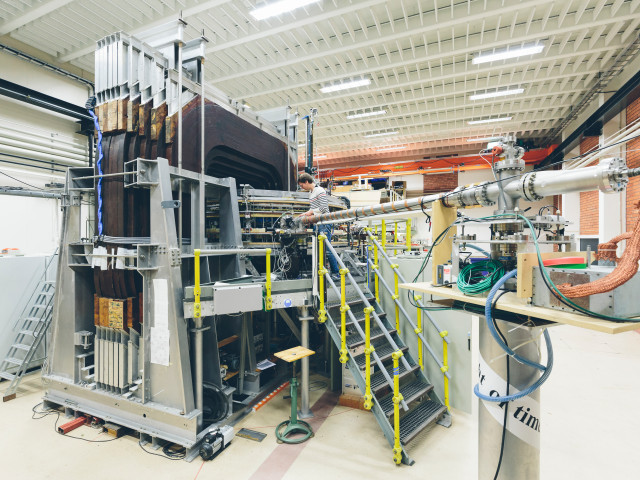Classification of solid materials by atomic structure, microstructure, atomic binding and crystalline order. The direct and the reciprocal lattices. X-ray analysis and its use for determining the lattice structure of a material. Models for electron and lattice vibrations (phonons) in crystalline materials (particularly the free electron model, the Deby model and the Einstein model). Electrons in real materials, Brillouin zones, band structure, Fermi surfaces. The basic physical understanding of certain materials and material properties: metals, semiconductors, insulators, dielectrica, ferroelectrica, superconductivity, dia- para-, ferro- and antiferro-magnetism, optical properties. The pn-junction in semiconductors.
IM2601 Solid State Physics 6.0 credits

Information per course offering
Course offerings are missing for current or upcoming semesters.
Course syllabus as PDF
Please note: all information from the Course syllabus is available on this page in an accessible format.
Course syllabus IM2601 (Autumn 2009–)Content and learning outcomes
Course contents
Intended learning outcomes
This is an introductory course in solid state physics and covers the most central concepts within the largest research area of modern physics. The course uses methods and principles from practically all previous courses within the Engineering Physics programme at KTH. After this course, the students are expected to be able to:
- Classify real solid materials based on basic concepts like atomic arrangement, microstructure and crystal binding.
- Use the lattice structure of crystalline materials both in real space and in reciprocal space (k-space) and be able to transform between these two spaces.
- Apply the theory of X-ray diffraction in reciprocal space to determine the lattice structure of crystalline materials and be able to use these principles also for other matter waves.
- Formulate basic models for electrons and lattice vibrations (phonons) for describing the physics of crystalline materials, make calculations based on these models and both quantitatively and qualitatively relate the found conclusions from the models to experimentally measured quantities of materials.
- Formulate electron properties in a periodic potential, explain the factors affecting the band structure of a crystalline material and based on this develop a qualitative understanding of the relation between band structure and the electrical/optical properties of a material.
- Calculate some physical parameters of semiconducting materials and explain the basic physical principles behind a pn-junction.
- Explain the physical principles for different types of electric and magnetic phenomena in solid materials (like e.g. paraelectricity, dielectricity, ferroelectricity, superconductivity, paramagnetism, diamagnetism, ferromagnetism, antiferromagnetism etc) and in relevant cases relate this to macroscopically measured physical quantities
Literature and preparations
Specific prerequisites
120 university credits (hp) in engineering or natural sciences and documented proficiency in English corresponding to English A.
Literature
Charles Kittel, Introduction to solid state physics, 8th edition, John Wiley and Sons Inc. (2005), ISBN: 978-0-471-41526-8
Östen Rapp, 100 lösta problem i fasta tillståndets fysik, KTH (2007)
Laborationsinstruktioner från kursansvarig
Examination and completion
Grading scale
Examination
- TEN1 - Examination, 4.5 credits, grading scale: A, B, C, D, E, FX, F
- LAB1 - Laboratory Work, 1.5 credits, grading scale: P, F
Based on recommendation from KTH’s coordinator for disabilities, the examiner will decide how to adapt an examination for students with documented disability.
The examiner may apply another examination format when re-examining individual students.
If the course is discontinued, students may request to be examined during the following two academic years.
Written exam (TEN1), 4.5 hp and laborative work (LAB1), 1.5 hp
Examiner
Ethical approach
- All members of a group are responsible for the group's work.
- In any assessment, every student shall honestly disclose any help received and sources used.
- In an oral assessment, every student shall be able to present and answer questions about the entire assignment and solution.
Further information
Course room in Canvas
Offered by
Main field of study
Education cycle
Supplementary information
The course is evaluated and developed according to the KTH policy for course analysis.
The course is replaced by SK2750 as from autumn term 2017.